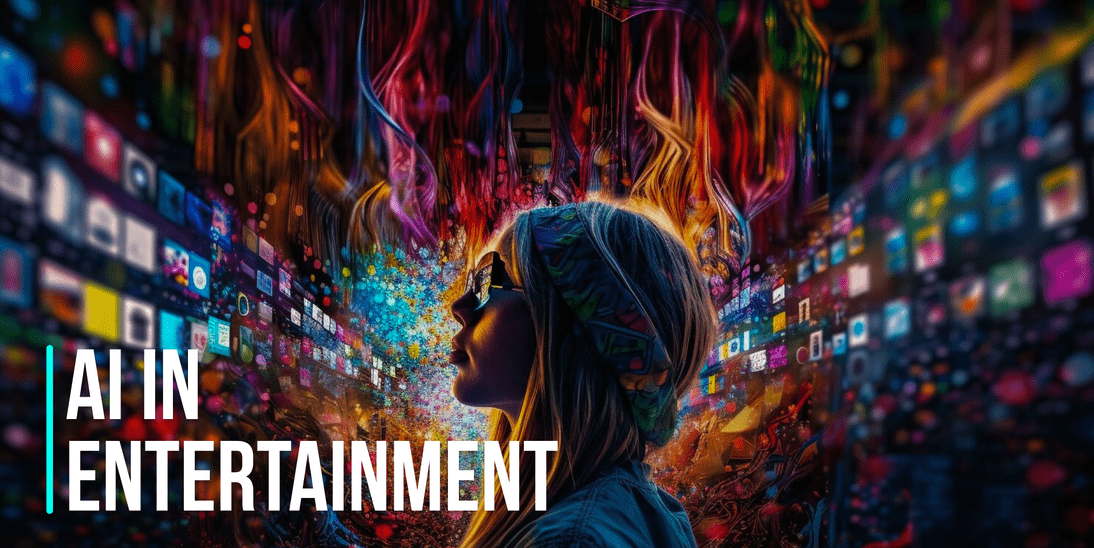Introduction
Within the dynamic landscape of Artificial Intelligence, Generative Adversarial Networks (GANs) have emerged as a captivating domain that has captured considerable interest. They’re not just fancy tech terms – they’re a super cool way of doing AI that could change a bunch of stuff, like art and music.
In this article, we’re going to break down what Generative Adversarial Networks (GANs) are how they work, and their applications.
So let’s start
What is Generative Adversarial Networks (GANs)
Generative Adversarial Networks, also known as GANs, were introduced by Ian Goodfellow and team in 2014 as a type of machine learning model, that looks remarkably realistic.
To understand how GANs work, imagine a team of art forgers trying to create convincing replicas of famous paintings and an art expert tasked with spotting the forgery. The forgers constantly refine their techniques based on feedback from art experts, who point out any discrepancies. GANs operate on a similar principle, but instead of physical paint and canvas, they deal with digital data and complex algorithms.
GANs consist of two main components: the generator and the discriminator. The generator creates synthetic data, while the discriminator evaluates it to see if it looks relatable to real data, creating a continuous loop of improvement, leading to the generation of highly realistic synthetic data.
Working of GANs
Generative Adversarial Networks (GANs) are like a team of different neural networks—the generator and the discriminator. The generator tries to make things that look real, starting with random ideas and getting better with practice, just like an artist improving their art. The discriminator’s job is to figure out if what the generator made is real or not. It learns from a labeled set of examples, which helps the generator get better.
They play this back-and-forth game, trying to outsmart each other. As they practice, the Creator gets better at making realistic things, and the Checker gets better at telling if they’re real or not. This back-and-forth training is why GANs can create stuff that’s so close to the real deal, making it tricky to tell what’s made by the robots and what’s the original stuff.
Types of GANs
Deep Convolutional GANs (DCGANs)
DCGANs specialize in image generation, utilizing convolutional neural networks for both the generator and discriminator. This ensures stable training and enables the synthesis of high-quality images through step by step learning.
Conditional GANs (cGANs)
cGANs introduce controlled generation by incorporating additional information, such as class labels or other data, during training to help both the generator and the discriminator make things more accurate. This helps cGANs create exactly what you want, making them really good at generating specific and targeted stuff.
CycleGAN
CycleGAN focuses on unpaired image-to-image translation, allowing the transformation of images from one domain to another without paired examples during training. CycleGAN uses something called cycle-consistency to make sure it can change an input image to the new style and then change it back without losing the original details. It is often used for style transfer and domain adaptation, providing versatility in image translation tasks.
StyleGAN
StyleGAN is an extension of the GAN architecture that generates high-quality, realistic images. It works by building up an image from small to large, adding more details as it goes along. This allows the model to focus on different parts of the image, like facial features or hair color, without affecting other parts. . You can tweak how the final image looks by adjusting inputs called style vectors and noise.
Benefits of using GANs
Image Generation and Synthesis
GANs excel in creating high-quality and realistic images. They are employed in art, design, and entertainment to generate diverse visual content, such as realistic faces, artwork, or even entirely new scenes.
Innovation in Art and Design
Generative AI has been widely adopted in the art and design community, with artists using it to create unique pieces, generate design ideas, and explore new forms of creative expression.
Personalization and Customization
Generative AI allows for the customization and personalization of content, catering to individual preferences. This is evident in applications like personalized recommendations, customized designs in fashion, and tailored user experiences in various digital platforms.
Smarter Decision-Making
Generative models demonstrate the skill to make sensible predictions and inferences. As these analytical abilities improve, AI has the potential to assist in making better decisions in intricate fields like finance, medicine, and public policy. However, it’s essential for humans to oversee and ensure that AI reasoning aligns with ethical considerations and factual accuracy.
Creativity and Content Generation
Generative AI, particularly models like GPT-3, has demonstrated remarkable creativity in generating human-like text, images, and even music. This ability to create content across different domains has captured the attention of developers, artists, and businesses looking for innovative ways to produce new and engaging materials.
Applications of GANs
Text-to-Image Synthesis
GANs translate textual descriptions into realistic images, contributing to applications like graphic design, creative writing support, and enhancing accessibility for visually impaired users.
Creating Deepfakes for Entertainment
GANs play a role in generating deepfake videos, allowing for realistic manipulation of video content, which is used in the entertainment industry for special effects and digital storytelling, though it raises ethical concerns about misinformation and privacy.
Virtual Try-On in Fashion
GANs enable virtual fitting rooms by superimposing clothing items onto images of users, revolutionizing the online shopping experience and reducing the need for physical try-ons in the fashion industry.
Image-to-Image Translation
GANs excel in translating images from one domain to another, enabling applications like turning satellite images into maps or transforming day scenes into night scenes for computer vision and graphics enhancement.
CGI and Animation
GANs contribute to the creation of realistic computer-generated characters, scenes, and special effects in movies and video games, revolutionizing the entertainment industry by automating and enhancing the generation of visual content.
Generating Fresh music compositions
GANs help make fresh music by learning from existing songs These models contribute to music production by providing inspiration to artists, creating unique pieces, and even helping in the restoration of old or damaged recordings through the generation of high-quality audio data.
Style Transfer in Art
GANs are used to transfer artistic styles between images, allowing artists and designers to apply the characteristics of famous artworks to their creations, fostering innovation and unique visual aesthetics.
Future of GANs
GANs are a relatively new technology, but they have already shown great potential in a variety of applications. As GANs continue to develop, they are likely to play an increasingly important role in artificial intelligence.
According to McKinsey research, generative AI could add up to $4.4 trillion USD to the global economy annually, so it’s still very much an emerging trend.
The landscape of generative AI applications is likely to become more niche, with current uses ranging from customer service emails to legal work. It could potentially automate up to 30% of US activities.
In the future, GANs are poised to revolutionize various fields. They may enhance medical imaging accuracy, create realistic virtual environments for VR and gaming, and contribute to more human-like robots with natural movements and expressions. Additionally, generative AI is anticipated to become more lightweight, making models more efficient and requiring fewer computational resources.
Conclusions
In summary, Generative Adversarial Networks represent a revolutionary breakthrough in artificial intelligence. Their capacity to create realistic content has been applied across a range of sectors, spanning from the arts to medicine.
As we continue to explore the potential of GANs, it is crucial to balance the excitement with ethical considerations, ensuring responsible and mindful use of this powerful technology. The journey of GANs has just begun, and the future promises a canvas painted with endless possibilities.























